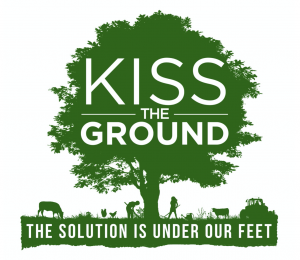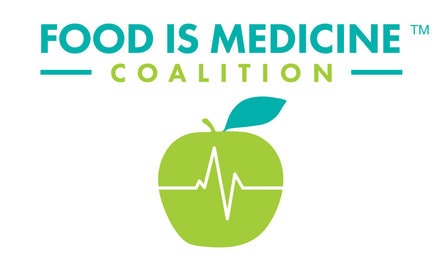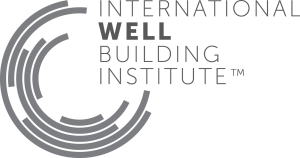
“This is the most beautiful place on earth. There are many such places.
Every man, every woman, carries in heart and mind the image of the ideal place, the right place, the one true home , known or unknown, actual or visionary.”
Edward Abbey
Where is your Ideal Location ?
Perhaps it is somewhere you only visited once or somewhere you visit often, or maybe it is that special place from your childhood, or somewhere in your neighborhood or maybe across the globe or maybe its somewhere you have yet to visit but are drawn towards or maybe it is where you are right now present in the moment.
These are ideal locations we all hold dear that resonate with us on a profound level. We experience perhaps a simple calming of our busy minds or sometimes maybe it is something more, a moment of awe or inspiration. It is in these moments where we experience a true connectedness with nature.
Yes, there are many special places ideal places unique to each of us individually. Collectively though we share the Ideal Location and that is this shiny ball of blue we call our home.
We believe our children and our children’s children deserve clean air, clean water, and preservation of nature and our resources. We believe nature can help make us happier, healthier and more creative, as such as humans we need to connect with and protect nature.
These philosophies are expressions of our shared values as they apply to environmental solutions. Our philosophies for our lands, our foods, our water, our buildings, our energy, and our ecosystems are written not as rules but instead as guidelines.
We believe society and individuals benefit greatly from new more sustainable approaches and we need to rethink best practices for:
- Our Land
- Our Food
- Our Water
- Our Buildings
- Our Energy
- Our Eco-Systems
- Our Humanity
What if as a society we viewed our current environmental challenges not as obstacles but as opportunities to innovate and reimagine everything we make and do? What if we viewed climate change not as daunting, but as a global cue that it’s time for something different? Climate change isn’t a curse It’s feedback.
What if we understood it is not economy vs ecology in competition, but Economy and Ecology together in collaboration as the path forward.
Our Land
So many of our favorite places are connected to the land. This is true whether it’s your favorite grove to walk through when stressed, the farmland you caringly steward, the stunning vistas of a national park you love to hike in. These ideal locations would be very different without trees, wildlife, and the natural beauty inherent to these ideal locations.
To protect such places, and by extension protect what we love about them, means protecting the land itself. We need to understand the ecosystem to both preserve it and help facilitate its continual growth. Wetlands, forests, deserts, all naturally occurring systems serve a myriad of animal, insect, tree and plant species that are interconnected; all of nature is connected. Trees, birds, animals, soil microorganisms, and land depend on one another to exist. Supporting our ideal locations means being sensitive to this delicate web.
By working to preserve the land through reforestation, conservation, regeneration, improved land management, and other means, we also preserve the places that are precious to us.
Land use and land conservation can work synergistically to encourage responsible, sustainable and regenerative development in our urban areas. It can also be used to manage our grasslands, wetlands, farmlands and forests as a primary tool to draw down carbon. As we advocate for the land, we also need to be open to learning what tools are best suited for each unique setting.
Our Food
Food is the physical intersection where the health of the land and the health of our bodies meet. Everything we eat is vitally important; we need nutrient dense, pesticide free land to grow nutritious, energizing food. This requires us to steward the land, reduce its vulnerability to drought and erosion and replenish lost nutrients in a regenerative and sustainable manner.
Every soil organism, nutrient, and drop of water is essential for the nutrition of our food including fruits, vegetables, grains, and meat. Most importantly, we need nutritious food to fuel our bodies so we can accomplish our everyday tasks.
Additionally, studies show that growing food on healthy land is good for the climate. Raising animals fed their natural diets, while also good for the climate, yields healthier meat, eggs, and dairy. Approaching food production and agriculture from a holistic perspective will reduce our food system’s vulnerability to climate change.
Techniques like regenerative agriculture, compost applications, carbon farming, silvopasture, cover cropping, nutrient management, and more will be instrumental in the challenges ahead of us. Besides climate, growing and raising food this way yields the most nutrition we can possibly afford.
All of this requires taking care of the land in a way that reflects a larger ecosystem and timeline beyond growing seasons. We need to take a holistic view of food production methods, chemicals used as fertilizers, weed killers, and desiccants, and what it means to be part of a global economy where food is shipped across the world.
Transforming our food system may be the single most important strategy to not only transform our personal health but also our economy, our community and our planetary health.
Our Water
Our “blue planet” is dominated by oceans that stretch across two-thirds of its surface. About 71 percent of the Earth’s surface is water-covered, with the oceans holding about 96.5 percent of all Earth’s water. Water also exists in the air as water vapor, in rivers and lakes, in icecaps and glaciers, in the ground as soil moisture and in aquifers. Water is just as important to our bodies as it is to all life on earth. Our brains, heart, lungs and skin, in fact our entire body is mostly water. Caring for our earth and our bodies is so heavily connected; because much of these connections are made from water, it is vital to find ways to protect our water. It is no coincidence that 70% of the Earth is water and 70% of the human body is also made up of water.
Although we often tend to take water for granted, its importance cannot be underestimated. Most of us can go three weeks without food, but even less without water! Our food sources—animals and plants—require water and irrigation, too. Potable water is inexpensive in the United States. We pay less as a percentage of household income for water than any other developed country.
Healthy, pure, and accessible sources of water are at the backbone of the climate issues that await us. And we must protect it. All of life, no matter who or what—rich or poor—has a right to clean, healthy, and free water sources that can be trusted, and which no one has the right to spoil. This right should be protected, and not spoiled by energy extraction, development, or irresponsible practices that contaminate or diminish our waterways. Unfortunately, recent years have shown increased volatility in extensive droughts and increased flooding, both of which harm our access to fresh water.
We have yet to classify 91% of species in our vast oceans. Given that there is so much we don’t know about marine life, we must stop the warming of our oceans and the trend toward extinction that many species are experiencing. Our own diet can have an impact on our oceans as well; we need to combat overfishing and foster more transparency around seafood harvesting.
Our Buildings
In order to be happy, healthy, and meet all our basic needs, we really don’t need much. All our ancestors needed to survive was air, food, water, and shelter. Humans have come a long way from where we were thousands of years ago. According to the US Environmental Protection Agency, Americans now spend an average of 90% of our time indoors. The spaces we work in, live in, and visit should be inspiring, energy efficient, and healthy places. This spans design and measurable aspects like indoor air quality and lighting.
How we construct buildings, as well as how we use energy to power them, are important aspects in our efforts to combat climate change. Buildings use about 40% of energy in the US and account for more than a third of emissions. Socially responsible real estate development, net-zero buildings, green architecture, low-energy engineering, and more are important measures to address what is perhaps the most significant demand of our times. A holistic approach to limit our impact would include responsibly sourced materials, and biophilic design that helps bring the outdoors in and reflects a building’s environment. We need the construction of dwellings and communities that improve the overall quality of life for human benefit, wildlife welfare, and the health of the surrounding environment.
Our built environment using sustainable construction practices, with the complement of land use reforms, can help usher a transformation to a culturally rich, socially just and ecologically bountiful society.
Our Energy
Energy is the lifeblood of our modern society. It brings us food, water, shelter, transportation, comfort, art, entertainment, innovation, and so much more. Our technological advancements have increased both our dependence on and appreciation of energy sources. However, in order to fully appreciate the gifts that energy brings us— and enjoy what we love about land, nature, and wildlife— we need to shift our paradigm from a culture of extraction to a culture of stewardship.
Yes, this will be a challenge. Though what if, instead of seeing challenges ahead, we saw opportunities for transformation, exploration, and innovation in an exciting frontier?
Switching from fossil fuels to renewable energy sources like wind, solar, biomass, geothermal, and many other renewable energy sources may cause growing pains. At the same time, it will create a new demand for talent, skills, training, and expertise generating a variety of new careers. It will supply jobs, opportunities, and meaningful work.
Technological advancements have increased our dependence on energy. Think of your morning routine and each time you use electricity – the alarm, the lights, the coffee maker, the refrigerator, email.
Renewable energy jobs are increasing and creating stable and high-wage employment for American workers. However, avoiding energy use is far more efficient than using energy from renewable sources. Small but cumulative actions like unplugging appliances when not in use, biking or using public transit, and integrating passive strategies in building construction can help reduce overall demand for resources.
Our Ecosystems
Many of us genuinely enjoy— and even utilize— the earth’s beauty: its flora, fauna, and gorgeous landscapes. All these aspects are connected to one another, regardless of whether they are obvious or visible to us, or not.
These relationships form a delicate web called “ecosystems.” We’ve carried on building societies and economies as if we aren’t part of any ecosystem, and as if we’re not like animals, plants, and other living beings. But as climate change has shown us, this couldn’t be further from the truth.
Instead of viewing ecosystems as resources to exploit, it’s time for the world to see the wealth they offer when we keep them intact.
There is a whole field of medicine now that understands that there is a deep link between ecosystems health and ‘planetary health’.
A healthy cell sits in a healthy organ in a healthy body in a healthy family in a healthy community in a healthy bioregion in a healthy ecosystem on a healthy planet. And of course, it goes the other way around. If we do anything that is unhealthy at any of those levels it affects health at all the other levels.
Once we understand all planetary systems are deeply interconnected. We can make the protection of their habitats and ecosystems a priority.
Many of us have forgotten how to listen, feel and sense the natural world and why it’s vital to our own humanity to both connect with and preserve nature.
Our Children – Our Elders – Our Communities – Our Humanity
We need every possible resource to stave off climate change. And our most significant resource? Ourselves— people. Every single one of us.
We especially need intelligence and unprecedented problem-solving wherever we can find it. These could be found in anyone.
However, the potential for meaningful change within every individual is heavily underused— a vast yet untapped resource. Why? Because not all individuals on this planet have equal opportunities to make meaningful change. A complicated challenge, like climate change, will require a myriad of perspectives and a diversity of solutions.
And This means we’ll need faces, figures, and expertise from all backgrounds, cultures, and walks of life.
As such, we need equal opportunities for all: the poor, underprivileged, minorities, women and girls, people of color, indigenous cultures, people from developing nations, and other underserved or overlooked populations.
Let’s search for solutions in all people, so we can look back and say: “we worked together against climate change in earnest. We did all we could.”To do so, let’s provide opportunities to all people: no matter who they are, what they look like, or where they come from.
Think Globally Act Locally
Today, we have amazing technology to link people, companies, and organizations anywhere across the globe— even in a matter of seconds. Thanks to the Internet, social media, energy, and other means, we can collaborate and problem-solve in ways we’ve never been able to in the past.
But let’s not lose focus. Let’s acknowledge our global connections, but use them to examine, support, and heal what’s right in front of us: our local places, spaces, ecosystems, and people.
This is why we (Ideal Location) are committed to acting locally while thinking globally. Our mission is to support, uplift, and amplify small non-profits and organizations—especially under-funded ones— doing the work , whether on issues of food, land, water, people, energy, ecosystems, our buildings, or communities.
Let’s do everything in a local context while honoring our support of (and support from) our favorite global organizations and powerhouse groups that are fighting on the front lines against climate change.
Working together we can provide for healthier planet and provide a better life for our children, grandchildren and future generations.
Ideal Location: Wherever you are Wherever you are Going.














